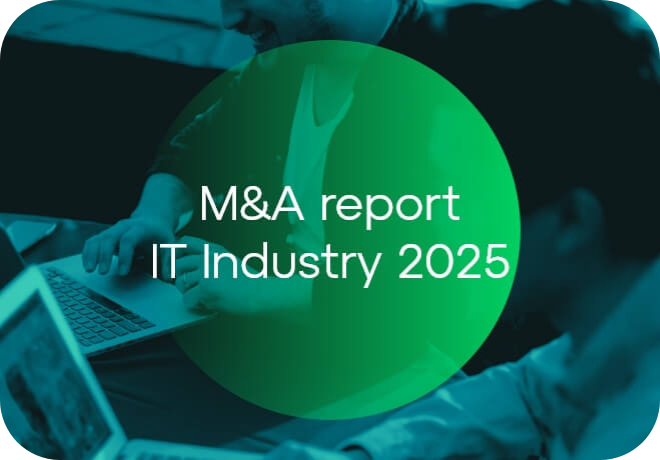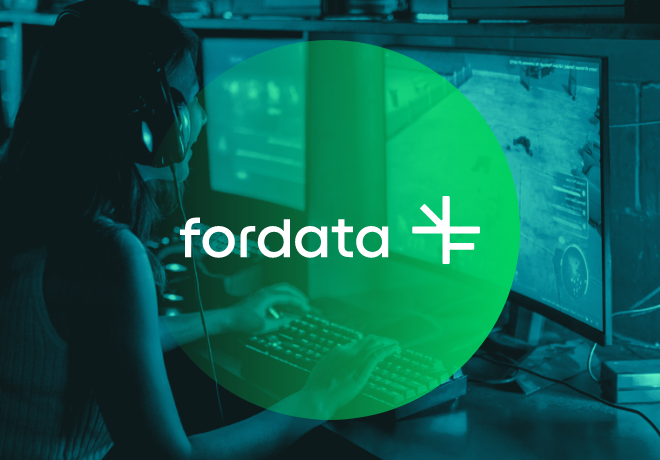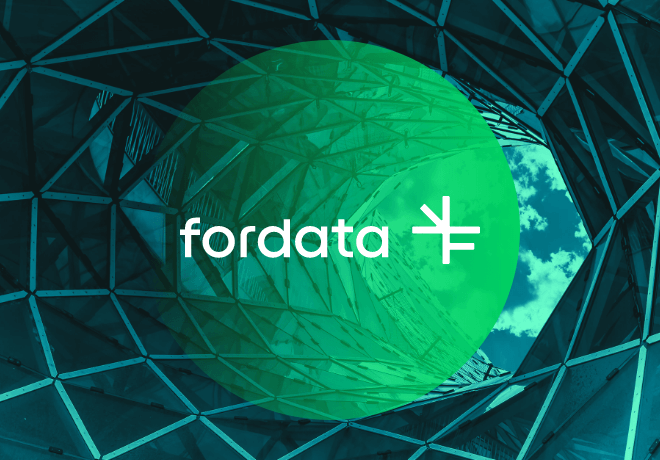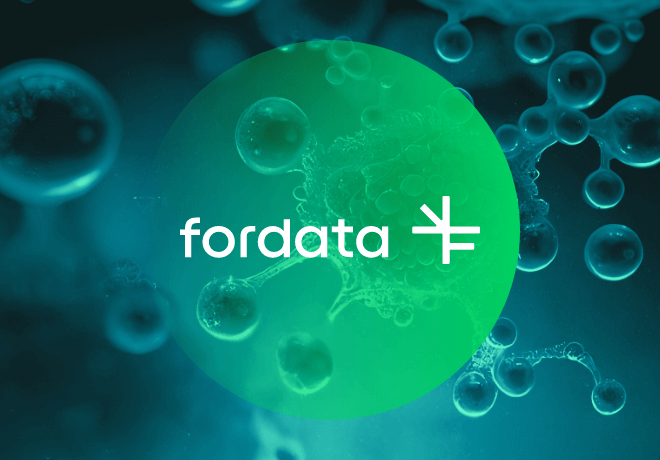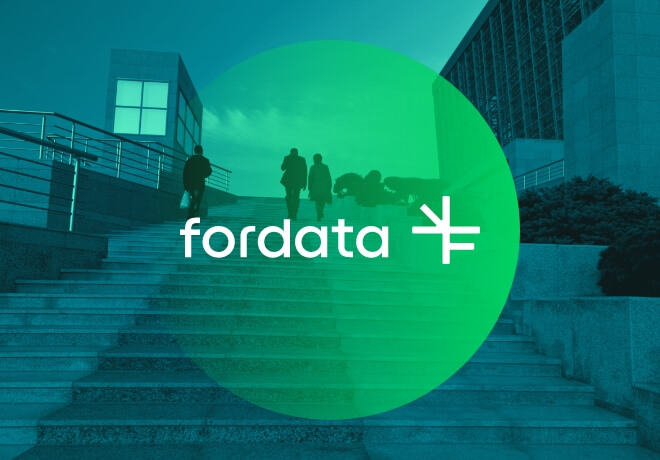18 . 04 . 2025
M&A The Role of AI and Automation in M&A Virtual Data Rooms
18 . 04 . 2025
Due diligence plays a pivotal role in determining the success of a deal. No wonder that this process presents the biggest challenges in M&A. These include the management of vast amounts of sensitive data and the time-consuming task of document review. However, the advent of AI and automation technologies is changing this harsh reality. How exactly?
Virtual Data Rooms are digital repositories that have become indispensable for securely storing and sharing sensitive information during M&A transactions. The integration of AI and automation within VDRs is a present-day reality that has once again reshaped the Due Diligence process.
AI-powered tools, leveraging machine learning algorithms and natural language processing (NLP), automate repetitive tasks, enhance data privacy, and facilitate a more efficient workflow. These advancements not only reduce the risk of human error but also enable M&A teams to make more informed decisions by providing real-time insights into large volumes of data.
The Evolution of Due Diligence in M&A
The landscape of M&A has undergone a significant transformation over the years, particularly in the realm of Due Diligence. This critical phase of transaction, essential for the scrutiny and evaluation of potential M&A deals, has evolved from manual, labor-intensive processes to sophisticated, technology-driven operations.
The journey from traditional methods to the integration of virtual dealrooms and then AI and automation within Virtual Data Rooms marks a critical shift in how M&A Due Diligence is conducted, enhancing both efficiency and security.
In short:
- AI-powered VDRs automate traditionally time-consuming and repetitive tasks, such as detailed document reviews and complex data analysis, through the application of machine learning algorithms and natural language processing (NLP).
- By automating these tasks, AI not only drastically reduces the time required for Due Diligence but also minimizes the occurrence of human errors, thereby ensuring a higher degree of accuracy in data handling.
- Automated redaction features, driven by AI, protect data privacy by efficiently removing sensitive information from documents.
- AI-powered tools can analyze extensive datasets to provide M&A teams with real-time, actionable insights, facilitating more informed decision-making.
- AI translations streamline Due Diligence by allowing for immediate comprehension of documents, empowering diverse investors, M&A teams, and stakeholders.
Transforming Due Diligence with AI-Powered Tools
Here are some of the most important features that Artificial Intelligence has brought to VDRs.
Machine learning algorithms
ML algorithms in VDRs can identify patterns, trends, and anomalies within the data, providing M&A teams with valuable insights that were previously buried in large volumes of documents. This not only streamlines the Due Diligence process but also enhances the decision-making quality by leveraging historical data to predict potential risks and outcomes of the M&A deal.
Automation
Automation plays a crucial role in transforming the workflow of Due Diligence by taking over repetitive and time-consuming tasks such as data entry, document review, and compliance checks. By automating these tasks, AI-powered tools free up valuable time for M&A professionals to focus on more strategic aspects of the deal.
Automation also reduces the likelihood of human error, ensuring that the data remains accurate and consistent across all stages of the due diligence process.
Natural Language Processing
NLP technology has significantly enhanced the capability of AI-powered tools to understand, interpret, and analyze documents using natural language. This allows for more sophisticated document review processes, where AI can identify, extract, and summarize key data points from financial reports, contracts, and other critical documents.
AI-powered Due Diligence
The culmination of these capabilities in AI-powered Due Diligence tools has not only shortened the entire process but also provided a level of depth and analysis that was previously unattainable. AI-driven insights help M&A teams to make more informed decisions, identify potential in deals that may have been overlooked, and assess the financial health and compliance of target companies with greater accuracy.
Enhancing security measures
Last but not least, beyond streamlining processes and enhancing decision-making, AI-powered tools in VDRs also play a vital role in improving security measures. Advanced AI algorithms can monitor user behavior, detect anomalies, and predict potential breaches before they occur. This proactive approach to data protection is critical in M&A transactions, where the stakes are high, and the confidentiality of sensitive information is paramount.
Working on Due Diligence documentation using VDR's AI
AI-powered document redaction and translation within VDRs are some of the key features in enhancing document management, automating manual tasks, and bolstering security during. Let’s have a closer look at them.
AI redaction tools
AI redaction within VDRs has transformed the laborious task of manually redacting/blackening sensitive information into a convenient process. Leveraging advanced algorithms and natural language processing, the tool can accurately identify and redact personal data, financial details, and other confidential information across vast volumes of documents. This not only enhances data privacy and compliance with regulations like GDPR but also significantly reduces the time and human effort required for document review. The accuracy of AI Redaction tools, often achieving up to 90% compared to manual efforts, ensures that sensitive information is securely hidden, mitigating potential risks of data breach and leakage.
AI translations
The global nature of M&A transactions necessitates the need for cross-border communication and understanding. AI Translations in VDRs address this need by providing instant, accurate translations of documents into multiple languages. With the capability to translate nuances and complexities of financial reports, legal documents, and other critical information, AI-powered translations empower investors, M&A teams, and stakeholders from diverse linguistic backgrounds to participate fully in the Due Diligence process.
Enhancing Data Management and Security in VDRs
Artificial Intelligence and automation have significantly bolstered the capabilities of VDRs in the realms of data management and security. This enhancement is crucial, given the sensitivity of the information involved in M&A transactions and the potential risks associated with data breaches. Let’s delve into these capabilities.
Real-time AI analysis
VDRs utilize AI to provide immediate insights into user behavior and document access, crucial for detecting potential security breaches and ensuring compliance with data protection laws.
Potential AI advancements
The lightning-fast evolution of AI and automation promises more sophisticated VDR functionalities, including deeper data analysis and enhanced security measures, further safeguarding sensitive M&A information.
The Future of AI-based M&A in VDRs
The integration of AI into virtual dealrooms has already revolutionized the Due Diligence process. However, the rapid development of generative AI and other AI advancements promises to push the boundaries even further, reshaping the M&A landscape in unprecedented ways.
Generative AI pushing frontiers in M&A transactions
Generative AI could automate the creation of complex financial models, generate predictive outcomes of potential M&A deals, and simulate the financial and operational impacts of mergers or acquisitions. This level of predictive analytics and scenario simulation could significantly enhance strategic decision-making, allowing M&A teams to evaluate the implications of various strategies with a degree of accuracy and foresight previously unattainable.
Enhancing security and compliance
As the capabilities of AI expand, so too do the possibilities for enhancing security and compliance within VDRs. Future AI advancements could include more sophisticated encryption methods, advanced anomaly detection for preemptive identification of potential data breaches, and automated compliance checks that adapt to changing regulations in real-time.
The human-AI collaboration in M&A
The future of M&A will not be about AI replacing human decision-makers but rather enhancing and augmenting their capabilities with AI agents. The collaboration between AI technologies and M&A professionals will be key to navigating the complexities of future transactions. AI can provide data analysis, predictive insights, and efficiency gains, while human experts bring strategic judgment, industry knowledge, and negotiation skills to the table. This synergy between human intuition and AI-driven analytics represents the optimal path forward in the M&A domain.
Conclusion
The future of M&A, powered by generative AI and ongoing advancements promises a landscape where transactions are faster, more strategic, and more secure. As AI technologies continue to evolve, their integration into VDRs and the broader M&A process will undoubtedly unlock new possibilities for efficiency, insight, and strategic advantage. The journey into this AI-enhanced future is just beginning, and the potential for transforming M&A transactions is vast and, still, largely untapped.
Did you like the article?

I draw energy to act from all kinds of outdoor activities - forest runs, or conquering mountain peaks. My favorite region? Central and Eastern Europe! Linking business relations with collecting interesting facts about CEE economy and culture is my thing. I share my travel experiences and expert knowledge in the #FORDATACafe video cycle.
Do you want to exchange knowledge or ask a question?
Write to me : Piotr Miszczyk page opens in new window
Virtual Data Room in Mergers and Acquisitions - A Perfect Match
TEST FREE TEST FREE-
01 . What is the Merger and Acquisition process step by step?

Learn about the key stages of the M&A process: analysis, Due Diligence, negotiation, integration, and the role of VDRs in streamlining M&A transactions.
12.12.2025
-
02 . Merger and acquisition of a company - what are the differences between these processes?

What’s the difference between a merger and an acquisition? Learn about the key differences and the benefits that mergers and acquisitions bring to companies in the marketplace.
12.11.2025
-
03 . Due Diligence in M&A: Key Legal Aspects That Determine the Fate of the Transaction

Learn the most important aspects of legal Due Diligence in M&A. What should you pay attention to to ensure the transaction goes according to plan?
20.08.2025
-
04 . Sell-Side vs Buy-Side M&A: How Virtual Data Room supports both sides of the transaction

Learn how VDR supports M&A deals for both the seller and buyer sides. Faster Due Diligence, better control, and greater security.
18.07.2025
-
05 . Virtual safe that decides the fate of the transaction – VDR in M&A

Are you preparing an M&A deal? Learn best practices for the Due Diligence process in VDR.
16.07.2025
-
06 . M&A Deals and Virtual Data Rooms: Why Are They a Perfect Match?

The role of Virtual Data Rooms in M&A deals is pivotal for transaction success. How can a deal be streamlined with the use of VDR?
16.04.2025
-
07 . Understanding Virtual Data Rooms: Key Features and Benefits

What features to look for in a Virtual Data Room and what benefits do they bring? Secure online Due Diligence is here.
03.04.2025
-
08 . Business, Secure File Sharing, and Virtual Data Rooms - The perfect combination

Learn why Virtual Data Room is the perfect tool for secure file transfer in a business environment. Protect sensitive information of your company.
26.03.2025
-
09 . What Is a Virtual Data Room (VDR) and How Does It Work?

VDRs removed the limitations of traditional data rooms, offering a secure online space where confidential data can be accessed by authorized users from anywhere in the world.
10.03.2025
-
10 . How does a VDR help minimise risk and increase transaction value in the TMT sector?

The TMT industry is constantly subject to M&A processes. Learn how VDR helps minimize risk and increase transaction value in the TMT sector. Discover the benefits and challenges of using it in M&A processes.
09.12.2024
-
11 . Bolt-on - the ‘buy and build’ strategy

Bolt-on, the process of acquiring a smaller company, is one of the popular strategies used by large corporations, private equity investors and venture capital funds.
25.11.2024
-
12 . The formula for a successful M&A process

A successful M&A process is the result of a synergy of many components. Successfully executing a merger or acquisition can be the key to gaining a competitive advantage and even surviving in the market.
19.08.2024
-
13 . How can VDR support the growth of the renewable energy industry in 2024?

In 2024, the renewable energy industry faces new opportunities and challenges. Thanks to financial support programs such as FENX.02.02, the sector of renewable energy sources has a chance for dynamic development.
02.05.2024
-
14 . DACH M&A in 2024 - will the rising wave return?

Explore how dealmakers in the DACH region continue to leverage M&A as a strategic tool amidst evolving business landscapes, including the impact of AI and sustainability. What does 2024 hold for this dynamic market?
03.04.2024
-
15 . Trends in M&A market in CEE in 2024 through the eyes of buyers

Market sentiment in Central and Eastern Europe (CEE) M&A market in 2024: a blend of cautious optimism, enthusiasm, and significant risk aversion.
08.03.2024
-
16 . The Shifting Landscape of Gaming M&A: A Tale of Investments, Acquisitions, and Emerging Trends

The trajectory of the gaming industry’s investment landscape has been anything but predictable. Q1 2023, marked by a cooling-off period from the frenetic growth during the Covid-boom, saw investments dip significantly.
15.09.2023
-
17 . M&A Landscape in the Middle East: Navigating Challenges and Seizing Opportunities

The Middle East has long been recognized as a dynamic and transformative region, and its M&A sector is no exception.
11.08.2023
-
18 . Energy industry 2023: Virtual Data Room in M&A transactions

The situation in the energy industry in Poland and Central and Eastern Europe is rapidly changing. What do investments in renewable energy look like?
06.06.2023
-
19 . VDR in due diligence process

M&As are a permanent element of the economic world. Their goal is to achieve strategic and financial benefits by expanding markets, diversifying products and production processes.
27.05.2023
-
20 . Outlook for 2023 for M&A transactions in Scandinavia

The Nordic countries are considered stable and developed markets with strong economies. What key trends will drive the Nordic M&A market?
27.04.2023
-
21 . What do M&A deals look like in 2022?

What does influence M&A deals in 2022 besides the war? We analyze the factors that shape the global mergers and acquisitions market.
28.06.2022
-
22 . The role of the CFO in mergers and acquisitions - has it changed?

Financial directors have faced the big challenge of managing company’s funds in the uncertain reality caused by the coronavirus …
22.03.2021
-
23 . The post-pandemic outlook on M&A in the Baltic States

Like the entire M&A market, in the first half of 2020, the Baltic region was marked by lockdowns, which had a number of…
25.02.2021
-
24 . What are the benefits of the FORDATA system in M&A processes?

Global opportunities for mergers and acquisitions are expected to remain firm after the initial lockdown, as pointed out by PwC, but the new and the ongoing transactions will have to adapt to the new circumstances.
15.09.2020
-
25 . The post-pandemic outlook on M&A in Czech Republic and Poland

Coronavirus did stir up trouble for practically entire economies in Czech Republic and Poland. In general, companies…
03.07.2020
-
26 . M&A in the age of coronavirus - market at a turning point

The situation on the Polish mergers and acquisitions market today resembles a controlled lottery. Some investors and entities are withdrawing or suspending operations waiting for stabilization
29.04.2020
-
27 . CEE countries stay firm as global economy bears down

In the face of economic downturn all around, also in Europe, countries in the CEE region are expected to keep growing, especially…
16.12.2019
-
28 . Due Diligence stages - selling your business step by step

Every good investment decision is based on sound knowledge about a given company and transaction process. This applies…
25.06.2019
-
29 . Due Diligence - what exactly does it include?

What does Due Diligence investigation consist of? Who performs it? What are its types? Find the answers to these and other questions on FORDATA blog!
18.06.2019
-
30 . Vendor Due Diligence - the Value of Negotiation Preparation

Vendor Due Diligence (VDD) is carried out only for the needs of the seller, which means that it takes place earlier than Due Diligence (DD).
09.11.2015
-
31 . How can we help you with Due Diligence?

Time plays a major role in M&A transactions. Even the smallest improvement that saves time needed to prepare and perform Due Diligence…
10.03.2014

